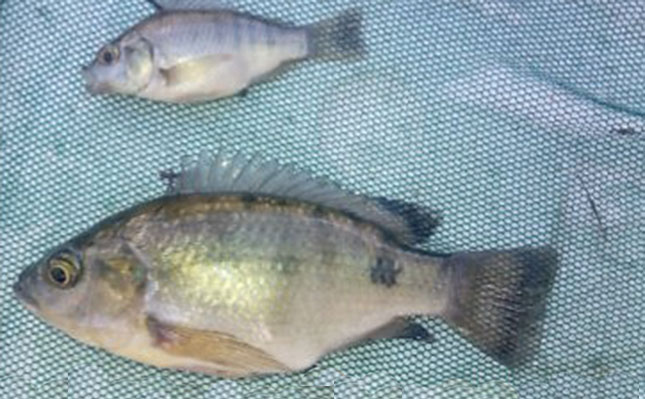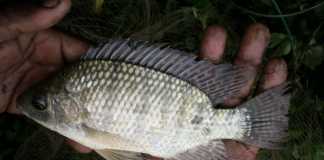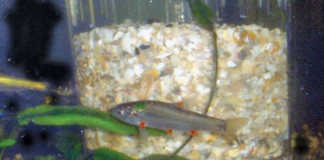
Photo: Nicholas James
Tilapia belong to the Cichlidae family. There are more than 900 described cichlid species, and numerous more undescribed scientifically in Africa, with Lake Malawi and Lake Tanganyika having over 1 000 endemic species between them.
Southern Africa is home to approximately 45 species, of which about a third are found in South Africa.
I am frequently sent photographs of juvenile cichlids, as they are difficult to identify. The following list is an indication of the species found in this country, and where.
Commonly caught juvenile tilapia and lookalikes
- The southern mouth-brooder (Pseudocrenilabrus philander) is not a tilapia but superficially resembles a juvenile tilapia. It’s a small species not exceeding 80mm in length, with a rounded tail, the only local cichlid that has one. The breeding colour in the males is yellow, with red and blue on the fins. Females are drab. It is common countrywide, except in the Western and Southern Cape.
- The redbreast tilapia (Tilapia [Coptodon] rendalli). The juvenile has characteristic reddish chest scales, a rounded forehead profile, and a dark ‘tilapia spot’ on the soft dorsal fin. It has six vertical bars on a metallic blue/grey body, and is a potentially larger-growing species from the warmer rivers of the north and north-east.
- The widespread vlei kurper (T. sparrmanii) has yellowish flanks with eight to nine
dark vertical bars, blackish pelvic fins and blue lips. It grows to about 12cm, and is occasionally larger. - The juvenile of the well-known blue or Mozambique kurper (Oreochromis mossambicus) can be difficult to identify. It has clear, unspotted fins and a silvery body with a straight forehead profile. Dark, thin, vertical bars may be present on the upper dorsal body surface, and the tail margin is straight and vertical. The eyes are yellowish.
- The Nile tilapia (O. niloticus) is an introduced species invading rivers in the north and east of South Africa. It is widely used in commercial aquaculture. Juveniles, adults and hybrids all show the distinct vertically spotted barring in the tail (caudal) fin. These stripes extend into the anterior dorsal and anal fins as the fish grow larger. In the juvenile fish, the body is not silvery/grey as in O. mossambicus, but more yellowish/ green. The eyes are red.
- The Israeli tilapia (O. aureus) is a rarely found exotic species. The juvenile closely resembles O. niloticus but the tail stripes are less distinct and the posterior tail edge is reddish. The overall colour is bluish grey. It occurs in northern, coastal KwaZulu-Natal.
- The black kurper (O. placidus) is limited to north-eastern KwaZulu-Natal, especially the Mkuze swamps and Lake Mgobezeleni area. It is a rare species, with the juvenile closely resembling O. mossambicus, but it has four spines in the anal fin, whereas all other tilapia in South Africa have three anal fin spines.
- The juvenile of the three-spot tilapia (O. andersonii) is silvery, with three, sometimes four, body spots. The juvenile greenhead bream (O. macrochir) is silver/ grey in colour, with a rounded forehead profile. Both species occur close to the confluence of the Shashe and Limpopo rivers, as well as in the Lephalale district and middle Limpopo catchment. These are large species, and the juveniles resemble O. mossambicus.













